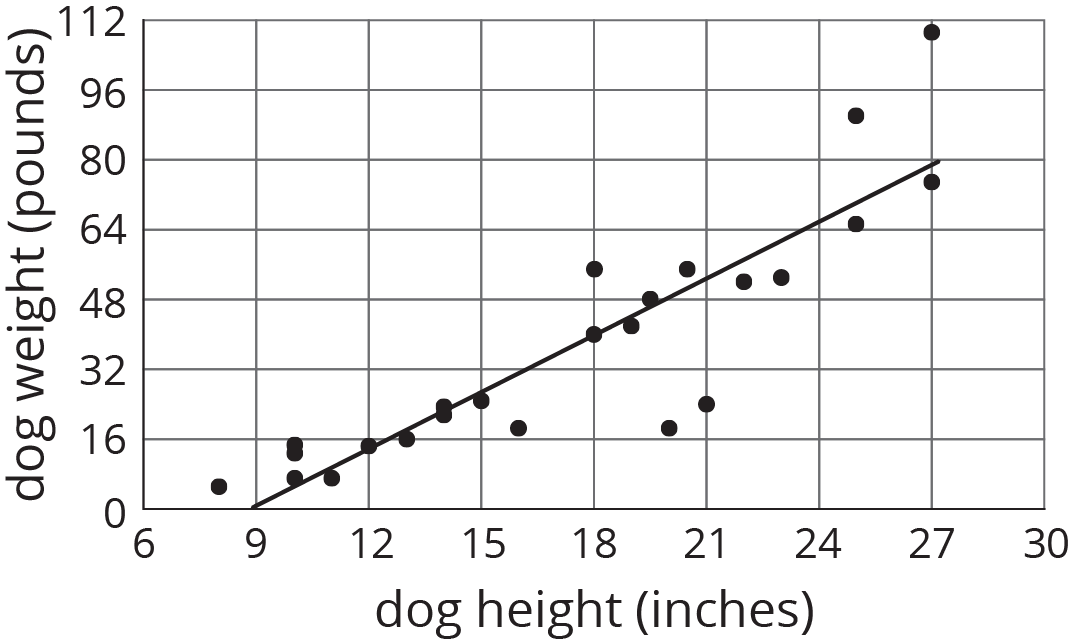Lesson 20
Describing Trends in Scatter Plots
Lesson Narrative
In this lesson, students are introduced to the terms positive association and negative association. They use fitted lines to help them understand this language and tie it back to their work in an earlier unit on linear relationships. They start to use language to describe trends like, "Cars made in a later year tend to have a higher price." They evaluate the goodness of fit of lines for a given scatter plot (note that this is done informally–students won't study things like least-squares regression until high school) and begin to draw their own lines to fit data in a scatter plot (MP5).
Learning Goals
Teacher Facing
- Critique (orally and in writing) a given line of fit on a scatter plot, and draw a different linear model of the same data.
- Draw a linear model to fit data in a scatter plot, and describe (in writing) features of a line that fits data well.
Student Facing
Let’s look for associations between variables.
Required Materials
Required Preparation
Each student needs one strand of pasta. Have extra available in case the strands break.
Learning Targets
Student Facing
- I can draw a line to fit data in a scatter plot.
- I can say whether data in a scatter plot has a positive or negative association (or neither).
Glossary Entries
-
negative association
A negative association is a relationship between two quantities where one tends to decrease as the other increases. In a scatter plot, the data points tend to cluster around a line with negative slope.
Different stores across the country sell a book for different prices.
The scatter plot shows that there is a negative association between the the price of the book in dollars and the number of books sold at that price.

-
positive association
A positive association is a relationship between two quantities where one tends to increase as the other increases. In a scatter plot, the data points tend to cluster around a line with positive slope.
The relationship between height and weight for 25 dogs is shown in the scatter plot. There is a positive association between dog height and dog weight.

Print Formatted Materials
For access, consult one of our IM Certified Partners.
Additional Resources
| Google Slides | For access, consult one of our IM Certified Partners. |
|
| PowerPoint Slides | For access, consult one of our IM Certified Partners. |